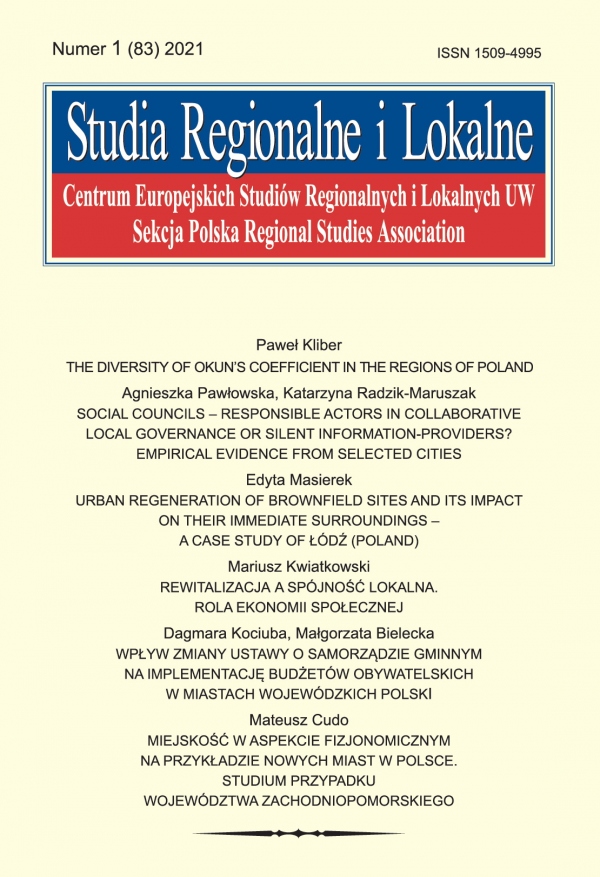Issue:
1(83)2021
Mateusz Cudo
The Physiognomic Aspect of Urbanness on the Example of New Towns in Poland. A Case Study of the Zachodniopomorskie Voivodship
DOI: 10.7366/1509499518306
Miejskość w aspekcie fizjonomicznym na przykładzie nowych miast w Polsce. Studium przypadku województwa zachodniopomorskiego
Celem artykułu jest określenie stopnia miejskości w zakresie fizjonomii tych miejscowości, które od 1990 roku, czyli w okresie transformacji systemowej, uzyskały status miast po raz pierwszy. Cechy jakościowe zabudowy zdefiniowano w oparciu o wskaźnik udziału zabudowy zagrodowej, a cechy wysokościowe na podstawie wskaźnika zabudowy, oznaczającego liczbę mieszkań przypadających na budynek mieszkalny. W ten sposób otrzymano grupę nowych miast w skali kraju o typowo wiejskiej fizjonomii (Glinojeck, Radłów, Świątniki Górne), a w drugiej części artykułu dokładniej zanalizowano ośrodki o niekorzystnych wartościach wskaźnika syntetycznego w województwie zachodniopomorskim (Gościno, Stepnica). Ich przykład świadczy o niedoskonałości stawianych wymogów w ramach procedury nadawania statusu miast, która w większym stopniu powinna uwzględniać fizjonomię potencjalnych miast i weryfikować ten aspekt miejskości.
The Physiognomic Aspect of Urbanness on the Example of New Towns in Poland. A Case Study of the Zachodniopomorskie Voivodship
The aim of the article is to determine the level of urbanness as regards the physiognomy of those settlements which, since 1990, the beginning of systemic transformation, have obtained the status of towns for the first time. The qualitative features of built-up areas were defined using the indicator showing the share of farm buildings, and height using the indicator showing the number of dwellings per residential building. In this way, a group of new towns with a typical rural physiognom existing in Poland (Glinojeck, Radłów, Świątniki Górne) was obtained, and settlements centres with unfavourable synthetic index values in the Zachodniopomorskie Voivodship (Gościno, Stepnica) were specified. Their example demonstrates the imperfection of the requirements and suggests that the procedure for granting urban status should to a greater extent take into account the physiognomy of potential towns and verify that aspect of urbanness.
Affiliation:
Mateusz Cudo: Uniwersytet Szczeciński, Instytut Gospodarki Przestrzennej i Geografii Społeczno--Ekonomicznej, ul. Mickiewicza 18, 70-383 Szczecin; ORCID: 0000-0002-1385-7578;
mateusz.cudo@wp.pl 


